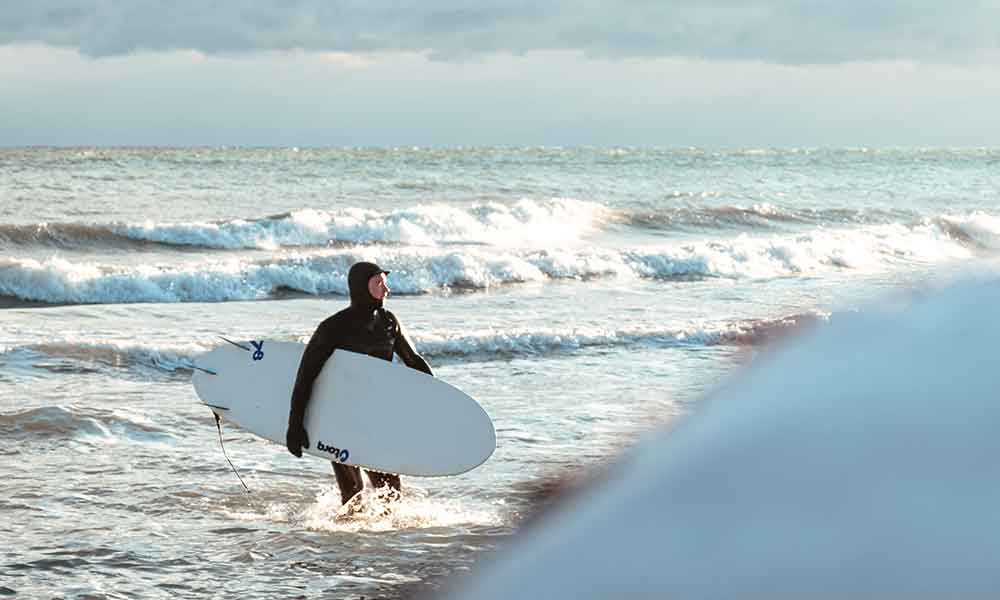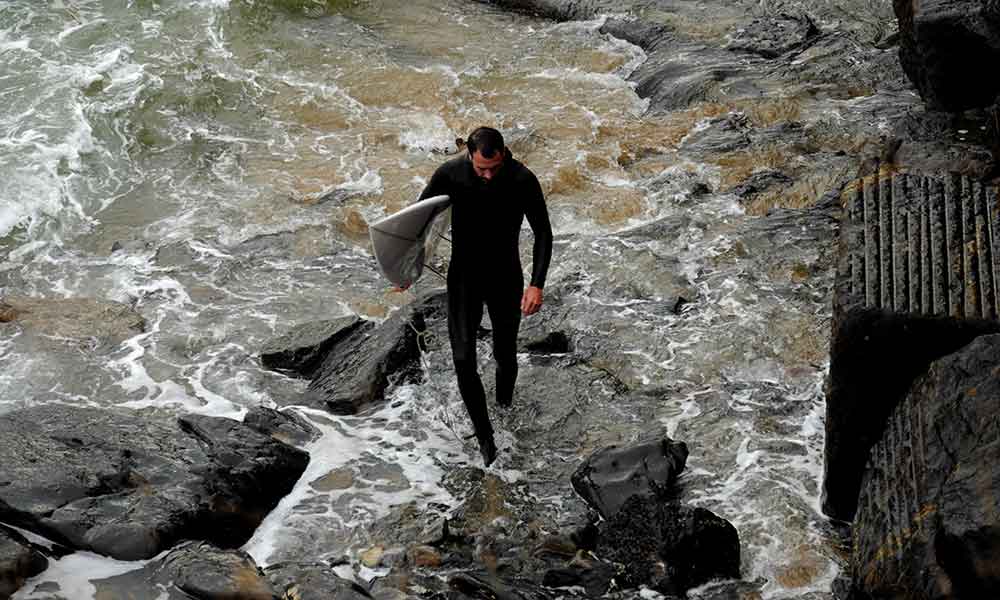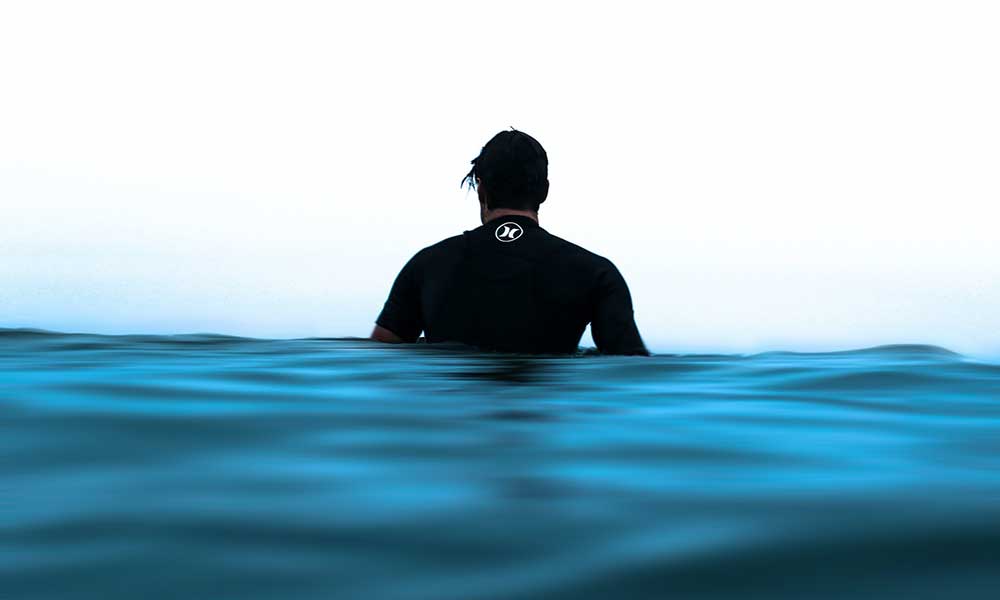Wetsuits are essential for all surfers and open-water swimmers. They will keep you warm when the water temperature drops and give you more freedom in the open water. But how do they work and why are they so effective?
You’d think that this was an easy question to answer, but as we shall discover, that isn’t necessarily the case.
How Do Wetsuits Keep Divers and Surfers Warm?
If you Google the question, “How do wetsuits keep you warm?” you’ll be faced with an avalanche of articles insisting they work by trapping a thin layer of water underneath the suit. The idea is that your body will heat the water and keep you warm, not unlike relaxing in a warm bath.
In reality, that’s not how they work. In fact, wetsuits would work better if there was no water involved at all, but then they would be drysuits and not wetsuits, and that takes us into entirely different territory.
Wetsuits are made from a synthetic material known as neoprene. Neoprene is a super stretchy material composed of closed-cell foam filled with microscopic air pockets. These bubbles trap air inside, creating a barrier that prevents heat from passing through.
The result is that you retain more of your body heat.
Neoprene is waterproof but wetsuits are not, and water gets inside the suit through openings around the neck and cuffs. This is likely why the myth of the “layer of water” endures.
Once water enters the suit, it’s important that it stays put. The water will be warmed by your body heat and if it escapes, it will be refreshed by cold water. This process is known as “flushing”. It can be countered by purchasing a tight-fitting wetsuit and making sure it’s snug around key entry/exit areas such as the neck, wrists, and ankles.
The tighter the fit is, the less water will be allowed inside, and the better it will be at retaining body heat. That’s why you should always look for a wetsuit that fits like a second skin, allowing you to move freely without creating any baggy areas or loose seals.
So, to be clear, wetsuits don’t rely on a thin layer of water to keep you warm. They work best when they are dry, but when water does get inside (and it will), it will be warmed by your body heat and this will help you to stay warm.
How Zip Wetsuits Work
A zip might not sound like the best addition to a suit that’s designed to protect against water and air, but most wetsuits use zips.
These zips typically include a piece of material (known as a “batwing”) that sits behind the zip and blocks any water from penetrating.
There are zip-free wetsuits available, and these suffer from less “flushing” issues than wetsuits fitted with back and chest zips, but they are harder to wiggle into.
Will a Wetsuit Keep You Warm in Cold Weather?
Wetsuits will keep you warm in cold water. They keep your body temperature high even as the temperature of the air and water drop.
They are not impenetrable, though, and there are also different wetsuit thickness levels and temperature ratings to consider.
In freezing water, you’ll need a much thicker wetsuit than you would during the spring or summer. You should also look for a full-body wetsuit, preferably one that includes a hood. In addition, you may want to consider neoprene gloves and booties. This will ensure that your extremities are covered with the same insulating material that covers your body.
Does Wearing Clothes Under a Wetsuit Make You Warmer?
Many wetsuit wearers choose to wear other garments underneath their suits. Additional clothing may make you a little bit warmer and could also protect against chafing.
If you don’t wear anything underneath your wetsuit, and you spend the day paddling on a waxed surfboard, it will create a lot of friction. Your skin will be softened by the water, irritated by the salt/wax, and then damaged further by the constant friction of the wetsuit moving back and forth. It creates something known as surf rash, which can range from mild irritation to a problematic skin condition that takes many days to clear.
Rash guards, compression shorts, swim suits, and board shorts are good options for keeping you warm. They all help to prevent heat loss and may also provide additional benefits.
There are downsides, though. For instance, additional clothing could lead to bunching and many of the best options can cost upwards of $100.







